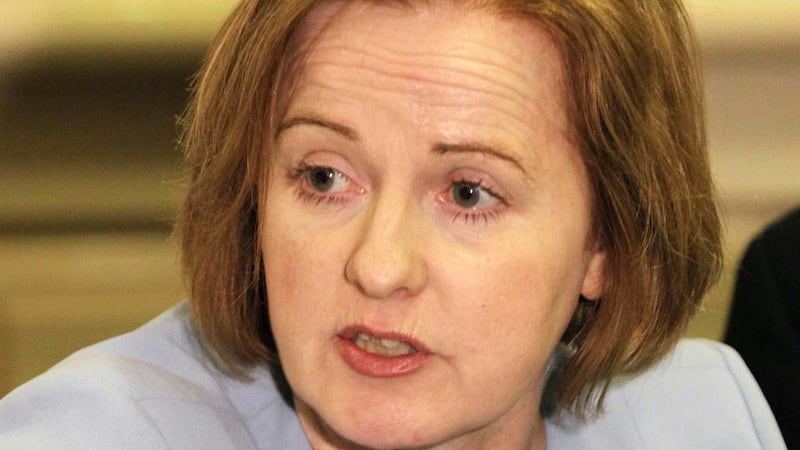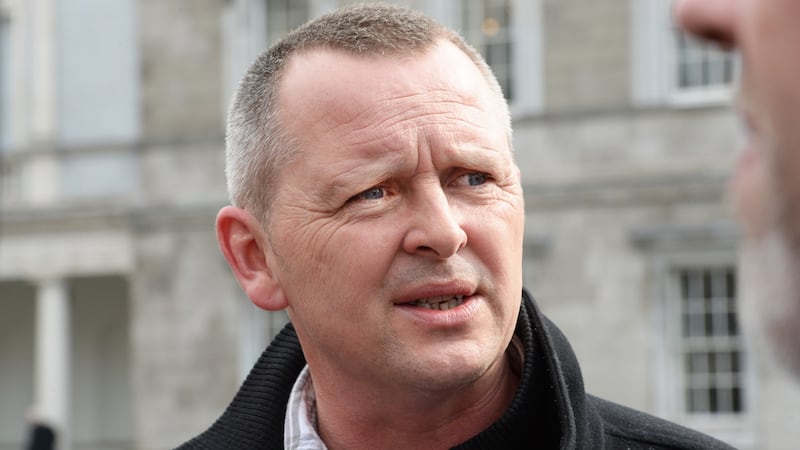The home page of Solidarity's website this week was dominated by a large photograph of Paul Murphy, the Dublin TD acquitted last week on charges of false imprisonment of the former tánaiste Joan Burton.
Click on the picture and you are brought to an interview Murphy gave to a Solidarity activist immediately after the verdict. The radical left doesn’t trust the media; it does its own interviews.
“What next for the left?” Murphy was asked.
“We’ll try to use this as a launch pad, to say to people that a substantial, broad left should be built in this country,” he said.
There's no question that the Jobstown trial has given Solidarity, and the radical left of which it is a mainstay, a political platform that it has not enjoyed since the height of the water protests in 2014.
But the water charges are no more, and the age of austerity is over. Fine Gael is in power, propped up by Fianna Fáil, and the Opposition benches are cluttered with small groups of various political hues. Sinn Féin is the largest group on the left, hyper-responsive to the threat posed to it by left-wing Independents and the small radical parties and alliances. Murphy and colleagues – Ruth Coppinger (Solidarity) and Richard Boyd Barrett (People Before Profit) especially – have established themselves as a significant presence on the political landscape, enjoying a media profile and a political influence out of proportion to their numbers and support. But where to now?

The verdict in the Jobstown trial has catapulted Solidarity into the political front line, and the party has been scrambling to take advantage of the opportunity. It held a rally last weekend at the Tivoli Theatre in Dublin, which was addressed by Eamon Dunphy, and the party has kept up a media and parliamentary offensive all week, demanding an inquiry into the Garda investigation.
Influx of new members
Since the verdict was announced, Paul Murphy says, Solidarity has been overwhelmed with applications for membership. More than 800 people have applied to join the party – a massive influx when you consider that Solidarity has about 400-500 active members, Murphy says.
Most parties would fall over themselves welcoming new recruits on this scale. However, although the prospect of a doubling of the party’s activist base is enticing, the party is cautious, too.
“We need to talk to them and see if they share our positions on issues,” says Murphy. “It’s not that we’ll turn people away, but we are interested in activist members. If they agree with our basic ideas – things like being anti-austerity and pro-choice – those would be red lines for us.”
Key to the political model of Solidarity is popular campaigns that provide radicalising moments. The water charges campaign was a textbook example, catapulting Murphy into the Dáil in a 2014 byelection. This week the prospect of a campaign on bin charges hovered into view after the Government announced changes to the charging regimes, intended to incentivise waste reduction and recycling, but also likely to result in increased bin charges for some people.
But the bin charges aren’t the water charges: people already pay bin charges. Half of them pay by weight and there is a waiver scheme in place.
More promising for the radical left, some think, is the campaign to repeal the eighth amendment, the cornerstone of the State’s strict anti-abortion laws. “Abortion rights,” says Murphy, “is the next big political movement.”
But the repeal campaign is a broad-based movement, with support across the political and ideological spectrum. It’s hard to see the radical left imposing their unique political brand on it.
A small force
For all the attention that Solidarity and its allies have garnered in recent times, they remain a small force in Irish politics. They are stronger than the radical left has ever been in Ireland, for sure, but they have about 4 per cent of the seats in the Dáil, and opinion polls show their support at around the same level. Moreover, there doesn't really seem to be any sign – as yet anyway – of that support growing significantly.
It is true that the structure of Irish politics has changed significantly as a result of the economic crash and the period of grinding austerity that followed it. The massive dominance of Fianna Fáil and Fine Gael – supported by smaller players where necessary – is changed, probably forever. The political landscape has been upturned.
Underpinning this change has been the rise of a large group of people, many of them deeply affected in their own circumstances by the economic crash and the austerity that followed, who do not accept that the Government and the establishment parties have their best interests at heart.
They think that the establishment – political, legal, commercial and media – act solely in accordance with their own interests, to their own selfish ends. Moreover, these voters believe that this by definition means that the traditional parties and their establishment allies act in direct opposition to their interests. This is an evil-elite-versus-the-virtuous-people analysis, and it is the bedrock of populism. And it is the basis of the radical left’s appeal.
Crowded house
The political problem for the radical left parties is that they don’t have the territory to themselves. Left-wing Independents contest it, as does Sinn Féin. Competition – that pillar of the capitalist creed – is fierce on the political left.
Solidarity and People Before Profit TDs know this, which is why they criticise Sinn Féin for being insufficiently pro-choice, a message they think will resonate with the young people they want to engage. They also highlight Sinn Féin’s shifting position towards participation in coalition with one of the big parties, a development that would delight the left like nothing else.

And so the "substantial broad left" that Murphy talks about is not open to Sinn Féin. Instead they talk about building alliances with some left-wing Independents, with trade unions, with "progressives", to generate the sort of movement that has seen the phenomena of British Labour leader Jeremy Corbyn and 2016 US Democratic presidential campaigner Bernie Sanders.
Corbyn and Sanders are the prophets of the new radical left; constantly cited as evidence not just for the popularity of left-wing ideas and policies, but of how these movements can arise suddenly and unpredictably.
But Corbyn and Sanders operated within existing political parties, which gave them paths to power. That’s not the case with the Irish radical left. They are building from the outside: a harder task, by some distance.
“Things change quickly,” says Murphy. “In Ireland, you haven’t seen these explicitly political movements, promising radical change. It hasn’t happened yet. But it can happen.”














